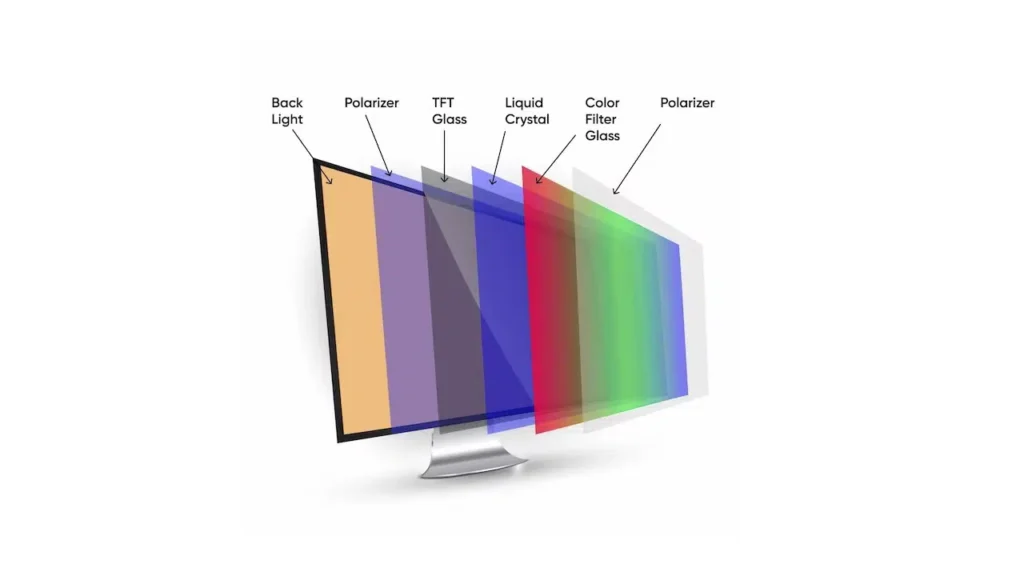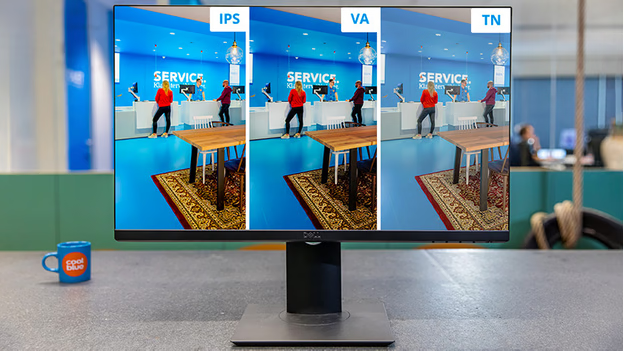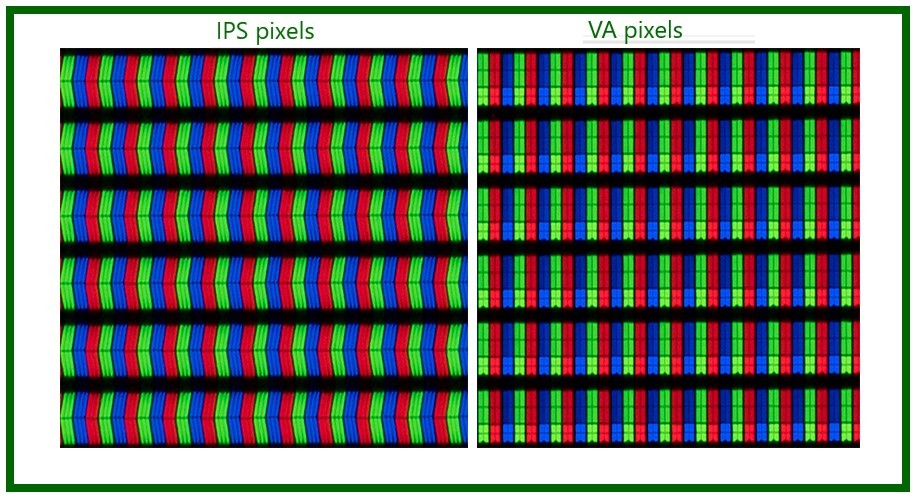When selecting a monitor, understanding the different panel types is crucial to ensure optimal performance tailored to your specific needs. The most common panel technologies—In-Plane Switching (IPS), Twisted Nematic (TN), and Vertical Alignment (VA)—each offer distinct advantages and trade-offs.
This article will help you navigate these options to find the best fit for your requirements.
In-Plane Switching (IPS)
IPS panels are renowned for their exceptional color accuracy and wide viewing angles. They are ideal for tasks that require precise color reproduction, such as photo editing, graphic design, and professional content creation.
Pros:
- Superior color consistency across wide viewing angles.
- Excellent color accuracy, covering a broad color gamut.
- Improved response times in modern IPS panels, suitable for gaming.
Cons:
- Typically higher cost compared to TN and VA panels.
- Lower contrast ratios, resulting in less deep blacks.
- Potential for “IPS glow,” a faint glow visible on dark backgrounds.

Best For: Creative professionals, photographers, designers, and users who prioritize color accuracy and consistency.
Twisted Nematic (TN)
TN panels are known for their fast response times and affordability. They are commonly used in gaming monitors where speed is crucial.
Pros:
- Very fast response times, reducing motion blur in fast-paced games.
- Low input lag, beneficial for competitive gaming.
- Generally more affordable than IPS and VA panels.
Cons:
- Narrow viewing angles, leading to color and contrast shifts when viewed off-center.
- Lower color accuracy and contrast compared to IPS and VA panels.

Best For: Competitive gamers and users seeking high-speed performance on a budget.
Vertical Alignment (VA)
VA panels offer a balance between IPS and TN panels, providing better contrast ratios and deeper blacks. They are suitable for general use and media consumption.
Pros:
- High contrast ratios, delivering deeper blacks and more vibrant images.
- Better color reproduction than TN panels.
- Wider viewing angles than TN, though not as wide as IPS.
Cons:
- Slower response times can lead to motion blur in fast-moving scenes.
- Color shifting may occur when viewed from extreme angles.

Best For: Users who enjoy watching movies, general-purpose computing, and casual gaming.
Organic Light Emitting Diode (OLED)
OLED panels are renowned for their exceptional image quality, delivering true blacks and vibrant colors. Unlike traditional displays that rely on a backlight, OLED technology allows each pixel to emit its own light independently. This self-emissive property enables OLEDs to achieve perfect black levels by turning off individual pixels completely, resulting in infinite contrast ratios and eliminating light bleed. Additionally, OLED displays offer wider viewing angles, faster response times, and thinner form factors compared to LCDs, enhancing both visual performance and design flexibility.
Pros:
- Infinite contrast ratios with true blacks.
- Excellent color accuracy and wide color gamut.
- Fast response times, ideal for gaming and high-speed content.
Cons:
- Higher cost compared to other panel types.
- Risk of burn-in with static images over prolonged periods.
- Lower peak brightness levels than some LCD panels.

Best For: Users seeking the highest picture quality for gaming, media consumption, and professional content creation.
Choosing the Right Panel Type
When deciding on a monitor panel type, consider the following factors:
- Usage: Determine your primary activities (e.g., gaming, professional work, general use) to identify the panel that best suits your needs.
- Budget: TN panels are generally the most affordable, followed by VA, IPS, and OLED.
- Performance Requirements: For fast-paced gaming, TN or OLED panels offer the best response times. For color-critical work, IPS or OLED panels are preferable.
- Viewing Environment: If you often view your monitor from different angles, IPS or OLED panels provide better consistency.
For a comprehensive overview of monitor specifications and to further assist in your decision-making process, visit our monitor buying guide.
To delve deeper into how display size and resolution impact your viewing experience, check out our article on display sizes and resolutions.
